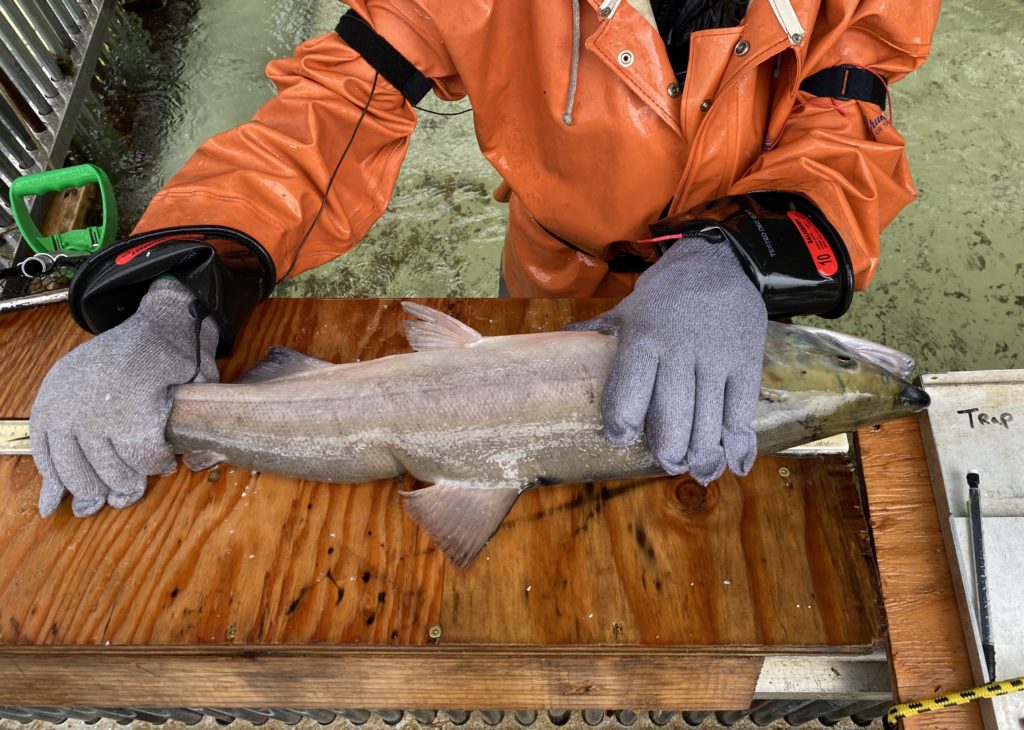By Katie Russell

I graduated this past May of 2020 and was able to work in and do undergraduate research in Dr. de Mutsert’s lab through GMU’s OSCAR program on river herring, two species of anadromous fish present in the Potomac. Anadromous fish spend their adult life in the ocean but return to freshwater tributaries to spawn. Now, as a recent graduate, I am working with different species of anadromous fish – Pacific Salmon.
I am currently a Biological Science Technician in Fisheries for the U.S. Forest Service in Sitka, Alaska. Here, I am working on a project to monitor the largest run of Sockeye Salmon in southeast Alaska. Monitoring this run of Sockeye is important to ensure that there is a large and healthy population of salmon both for human use and for the ecosystem. In Sitka, salmon are critical for people as a food source and a subsistence resource, and the salmon are critical for the ecosystem as a whole by contributing nutrients to the forest and other wildlife.

My coworkers and I monitor the Sockeye Salmon returning from the ocean utilizing a weir, a mark and recapture study, and by taking scale samples and length measurements on the Sockeye. The weir is a human built structure in a stream that prevents salmon from swimming upstream and enables us biological technicians to identify and count all of the migrating salmon before allowing them to continue on their journey. The weir also has a trap where we mark, measure, and take scales samples of Sockeye. Though the majority of the fish we see are Sockeye Salmon, there are also Dolly Varden (a species of char that can also be anadromous), Coho Salmon, Pink Salmon, and Chum Salmon that are returning to this freshwater system. With the mark and recapture study, we perform an adipose fin clip (cutting off one small fin on the back of the Sockeye Salmon) to mark the Sockeye and a beach seine to recapture them to ensure we are getting an accurate count on the number of Sockeye. We collect scale samples with forceps and then send them for laboratory analysis to determine the number of years the Sockeye spend in freshwater versus salt water. If the Sockeye are only spending one year in freshwater before migrating out to the ocean, this likely means that the freshwater system is productive and has ample food for the juvenile Sockeye Salmon. If the majority of the Sockeye are spending multiple years in the freshwater, this may mean that there is not as good of a food source for juvenile salmon. All of these monitoring efforts help to ensure that there is a large and healthy population of Sockeye Salmon returning to spawn and to be a food source for humans and wildlife.

Now that I have this experience working with adult Sockeye Salmon, come this fall, I will begin working at California Sea Grant’s Russian River Salmon and Steelhead Monitoring Program to gain experience working with juvenile Coho Salmon and steelhead (anadromous Rainbow Trout). I am very glad to have gained such great fisheries research experience in Dr. de Mutsert’s lab that has allowed me to find fisheries work as a GMU alumna!
